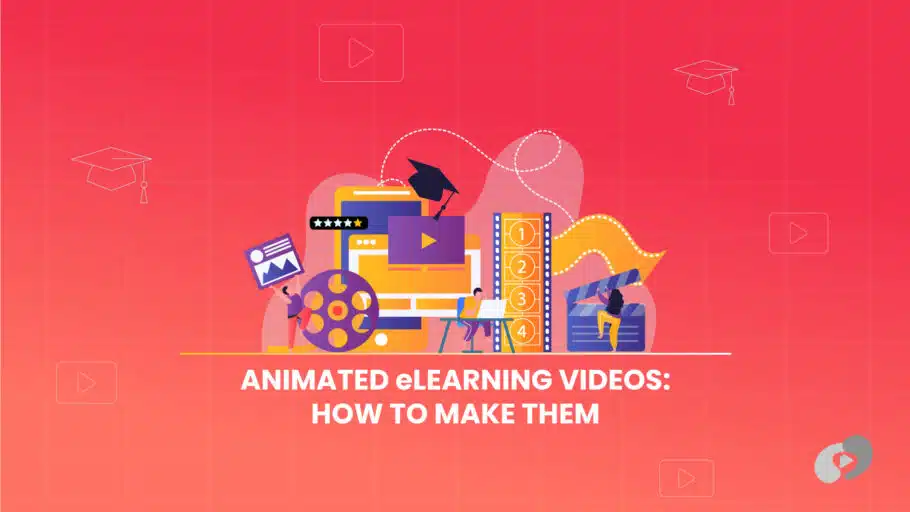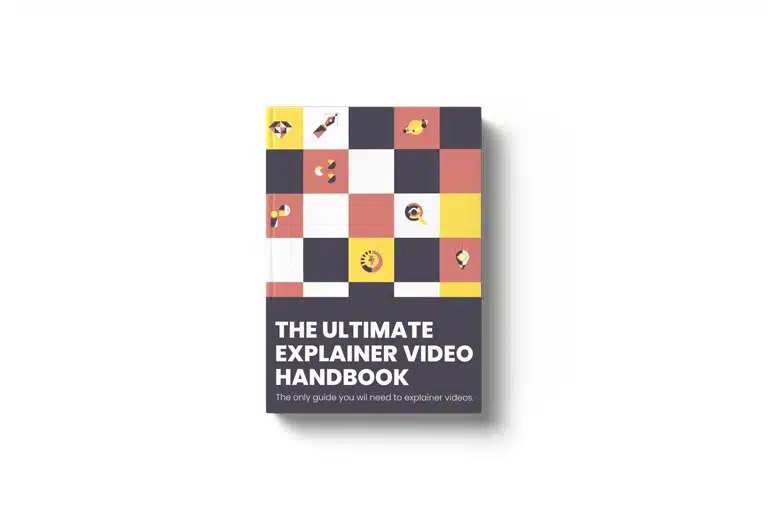Last Updated on September 18, 2024
Article Contents
Revolutionizing eLearning with Videos Using Animation
In the world of eLearning, animated videos have become an invaluable tool for creating engaging, effective, and interactive educational content. Whether you’re teaching a new concept, simplifying complex ideas, or delivering training, animation can elevate the learning experience in ways that traditional methods simply can’t. In this guide, we’ll explore how to make eLearning videos using animation, offering step-by-step techniques, tips, and best practices to revolutionize your online education content.
Why Animated Videos Are Transforming Online Education

Animated videos are not just eye-catching—they’re fundamentally changing how education is delivered. In online learning environments, where students are often left to study on their own, animation can be the key to holding attention, explaining difficult concepts, and encouraging active participation. Here’s why animation is quickly becoming a preferred tool in online education.
Benefits of Videos in eLearning Animation

The eLearning animation format brings a wealth of advantages to the table, not just for learners but also for educators. Let’s break down the core benefits that animated videos offer in an online learning setting.
1. Enhanced Engagement and Retention
One of the greatest strengths of animated videos is their ability to hold learners’ attention. Traditional text-heavy courses often struggle to keep students engaged, leading to lower retention rates. In contrast, animated videos combine visual storytelling, sound, and text to create a more immersive experience. This leads to higher levels of engagement and better retention of information.
Animations can also use humor, characters, and narratives to make learning more enjoyable, which increases the likelihood that learners will stay motivated to complete courses. For instance, adding animated scenarios with relatable characters can turn a dry topic into something far more captivating.
2. Simplifying Complex Concepts
Explaining complex topics in subjects like science, math, or technology can be challenging using text alone. This is where animation excels. By visually demonstrating concepts through movement and illustration, learners can better understand ideas that would otherwise be difficult to grasp.
For example, abstract ideas like molecular structures or the inner workings of a machine can be broken down into easy-to-follow animations, helping learners see how different components interact. This makes the learning process more intuitive and less frustrating.
3. Catering to Various Learning Styles
One-size-fits-all learning approaches rarely work, as every student processes information differently. Animated videos are incredibly versatile and can cater to different learning styles simultaneously:
- Visual learners benefit from the graphics and movement.
- Auditory learners gain from the voiceovers and sound effects.
- Kinesthetic learners engage more when interactive elements are introduced into the animation.
By combining different forms of media, animated videos provide a rich learning experience that accommodates a broad range of learners, making it more inclusive and effective.
4. Flexibility and Scalability
Once an animated video is created, it can be shared with an unlimited audience across different platforms and devices. This makes it incredibly scalable—whether you’re educating a class of 20 or 20,000, the animated video can reach everyone with the same quality and consistency.
Additionally, animated videos can be easily updated or modified to reflect new information or changes in curriculum, without needing to completely remake the content. This flexibility allows educational programs to stay current without significant time or financial investment.
Types of Animated Videos for eLearning
Not all animation styles are created equal, and the type of animation you choose for your eLearning content will depend on the subject, the learners, and the goals of the lesson. Here are some common animation formats that are particularly effective in educational settings.
1. Explainer Animations
Explainer animations are a concise way to introduce new concepts or clarify difficult topics. These videos are typically short and focus on explaining “how” or “why” something works. In an eLearning context, explainer animations are great for breaking down complex subjects into bite-sized lessons, making it easier for learners to digest the material.
2. Character-based Storytelling
This type of animation uses animated characters to walk learners through scenarios, making abstract ideas feel more relatable. Character-based storytelling is particularly effective for younger audiences or soft-skills training (such as leadership development or customer service), where empathy and human interaction are key.
By seeing characters navigate through problems, learners can connect more personally with the content and visualize how they might apply the lessons in real life.
3. Infographic Animations
When you need to present data, statistics, or facts in a visually compelling way, infographic animations are ideal. This style presents data in motion, helping learners understand trends, comparisons, or relationships between pieces of information.
For example, an animated infographic might illustrate the rise of climate change effects over time, with graphs and data points appearing on-screen as the voiceover explains key details. Infographic animations are perfect for breaking down numerical or data-heavy subjects.
4. Whiteboard Animation
Whiteboard animation mimics the traditional classroom whiteboard, where concepts are drawn in real-time. This style works well for step-by-step guides or tutorials, as it feels like a more personalized teaching method. Whiteboard animations are a great fit for subjects like math, science, or history, where the teacher can “draw” explanations as they narrate the material.
5. Interactive Animated Scenarios
One of the most engaging forms of animated videos is the interactive scenario, where learners make decisions that influence the outcome of the video. These are especially effective in corporate training, healthcare, or legal education, where decision-making is a crucial part of the learning process. Interactive scenarios allow learners to apply what they’ve learned in real-time, testing their knowledge in a simulated environment.
How to Create Effective Animated eLearning Videos
Producing animated eLearning videos doesn’t have to be complicated. With the right approach and tools, you can create effective videos that resonate with your audience. Here’s a step-by-step guide on how to make eLearning videos that are both engaging and educational.
Step-by-Step Guide to Producing eLearning Animations
1. Define Learning Objectives
The first step in creating an animated eLearning video is to clearly define your learning objectives. What should your learners know or be able to do after watching the video? Defining clear objectives will guide the entire production process and ensure that the video remains focused and effective.
2. Develop a Compelling Script
The script is the heart of your video. It needs to be engaging, concise, and aligned with the learning objectives. Keep your audience in mind and write in a tone that resonates with them. Avoid jargon or overly complicated language, and ensure that the script is easy to follow.
3. Create a Storyboard
A storyboard visually maps out how the script will come to life. Each panel of the storyboard corresponds to a different scene in the animation, detailing what will appear on-screen, what the voiceover will say, and how the visuals and text will interact. This step ensures that the animation flows smoothly and helps catch any issues before production begins.
4. Choose the Right Animation Style
As mentioned earlier, the animation style you choose will depend on the content and your audience. Whether it’s a whiteboard animation, character-based storytelling, or an infographic, the style should align with your educational goals and make the learning experience more effective.
5. Produce the Animation
This is where the actual animation is created. Depending on your resources and skills, you can either use professional software like Adobe After Effects or more accessible tools like Powtoon or Vyond. Focus on creating clean, professional visuals that align with your script and storyboard.
6. Add Voice-over and Sound Effects
Once the animation is in place, add a voice-over that complements the visuals. The voice-over should be clear, well-paced, and easy to understand. Avoid speaking too quickly or using a monotone delivery. Adding sound effects or music can also enhance the animation, but use them sparingly to avoid distracting from the educational content.
7. Incorporate Interactive Elements
If your video allows for it, add interactive elements such as clickable links, quizzes, or decision-making scenarios. This will engage your learners more deeply and give them an opportunity to test their knowledge and skills in real-time.
8. Test and Refine
Once your video is complete, test it with a sample audience to gather feedback. Are learners engaged? Do they understand the content? Use this feedback to make necessary adjustments and refine the video before rolling it out to your entire audience.
The Future of Animated e-learning Videos
As technology continues to advance, the future of animated eLearning videos looks incredibly bright. Emerging technologies are taking eLearning animation to new heights, offering even more ways to engage and educate learners

Emerging Trends and Technologies in Animated e-learning Videos
Here are a few trends that are shaping the future of eLearning animation:
- AI-Driven Personalization: AI is being used to create personalized learning paths, with animations that adapt to the learner’s progress and understanding of the material.
- Augmented Reality (AR) and Virtual Reality (VR): These immersive technologies are beginning to integrate with animated eLearning, offering learners the chance to interact with 3D environments and complex concepts in a hands-on way.
- Increased Gamification: More animated videos are incorporating game-like elements such as points, badges, and levels, turning learning into a more engaging and rewarding experience.
Conclusion
Animated eLearning videos are revolutionizing online education, offering educators a flexible, scalable, and engaging way to deliver content. Whether you’re simplifying complex topics, catering to different learning styles, or creating interactive experiences, animation opens the door to a new world of possibilities in education.
By following this guide on how to make eLearning videos, you’ll be well on your way to creating impactful, effective, and engaging educational content. As technology continues to evolve, the future of eLearning animation will only grow brighter, providing even more opportunities to enhance and enrich the learning experience.

